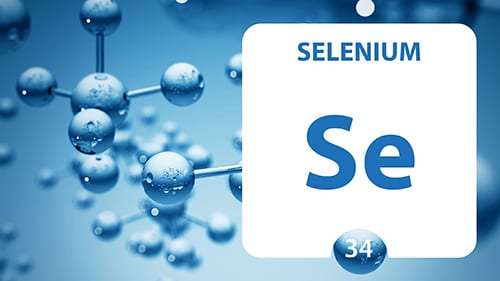One of the primary, and heretofore costly-to-remove, contaminants in coal-fired power plant wastewater streams is selenium. Concerns now abound regarding selenium toxicity in other streams, including mine tailings wastewaters, oil refinery discharge streams, and even some groundwaters utilized for plant makeup.
Selenium is a minor element that has biochemical properties similar to those of sulfur and is widely distributed in rocks, soils, and living organisms. It can occur in four different oxidation states: selenide (–2), elemental selenium (0), selenite (+4), and selenate (+6). Elemental selenium (Se0) exists in a crystalline form and is usually incorporated in soil particles. In the wastewater streams mentioned above, selenium often exists as the anions SeO32- (selenite) and SeO42- (selenate). While trace amounts of selenium are an essential human nutrient, in the concentrations that often exist in wastewaters, selenium can be quite toxic. It readily bioaccumulates through the food chain at levels that can cause adverse effects on higher-level aquatic life and wildlife, including fish and birds that prey on fish and invertebrates. (Risher, et al., 2001)
The United States Environmental Protection Agency (USEPA) has proposed regulations (40 CFR Part 423) on the selenium concentration in some wastewater discharge streams as recently as November 2019 (period for review just closed in January 2020). For example, listed below are the primary selenium discharge limits in flue gas desulfurization (FGD) wastewater streams at coal-fired power plants in these latest proposed regulations.
Table 1 – EPA Primary Selenium Limits on FGD Wastewater Discharge
| Long-Term Average (µg/L) | Daily Maximum Limitation (µg/L) | Monthly Average Limitation (µg/L) |
| 16.6 | 76 | 31 |
The EPA’s best available technology (BAT) so far for selenium removal has been biological treatment with adsorption of the oxidized selenium compounds on an organic substrate, and subsequent digestion of the selenium oxides by microorganisms that convert the compounds to elemental selenium retained by the microbes. These systems are very large and expensive; so expensive in fact, that plants have at times opted to shut down rather than install and operate this equipment.
There is now a patent-pending physical-chemical alternative to biological selenium removal, which utilizes a tailored formulation in existing process equipment for a series of chemical reactions with selenium. Laboratory tests and field results have shown that not only is selenium effectively removed using this process, but additional metals and metal oxides are also removed. These metals include arsenic, mercury, and molybdenum. The effluent from the physical-chemical process, containing fine precipitates, is treated with a specialty flocculant in a clarifier. The solids drop out and are periodically blown down to the sludge holding tank, with final conversion of the sludge to a solid cake via standard sludge dewatering equipment. Data from Toxicity Characteristic Leaching Procedure (TCLP) tests have demonstrated that this cake (subject to treatment for any other hazardous component) is more stable and may be landfilled as non-hazardous waste.
The following tables outline bench-scale results on two samples at mining and refinery locations.
Table 2 – Mine Water Selenium Removal Testing
| Constituent | Concentration |
| Selenium (µg/l as Se) | 30.16 |
| Selenium treated (µg/l as Se) | 2.9 |
Table 3 – Refinery Wastewater Selenium Removal Testing
| Sample | Concentration |
| Untreated oil refining wastewater selenium (µg/l as Se) | 24.4 |
| Treated oil refining wastewater selenium (µg/l as Se) | <2.5 |
Physical-chemical selenium removal using traditional water treatment equipment can save companies millions of dollars compared to best available technology costs and may be the deciding factor in continued operation or shutdown.
To learn more about this selenium removal technology, click here.
Please contact ChemTreat for assistance in designing a treatment program customized for your application. Like all other technologies, due diligence is necessary to determine the feasibility for utilizing methods. Always consult your equipment manuals and guides.
Reference
- Risher, John, McDonald, A. Rosa, Citra, Mario J., Amata, Richard J., Syracuse Research Corporation, Toxicological Profile for Selenium, report prepared for U.S. Department of Health and Human Services, Public Health Service, Agency for Toxic Substances and Disease Registry, retrieved from https://www.atsdr.cdc.gov/toxprofiles/tp92.pdf.

